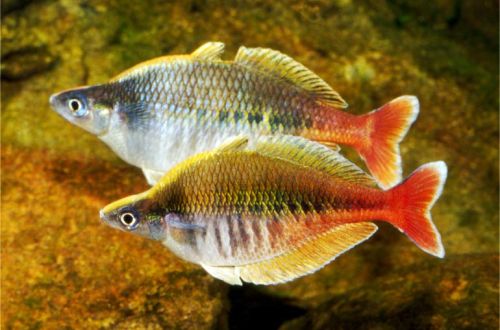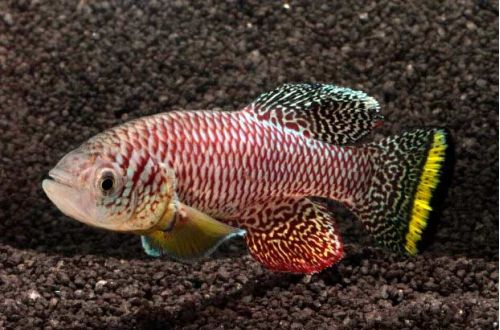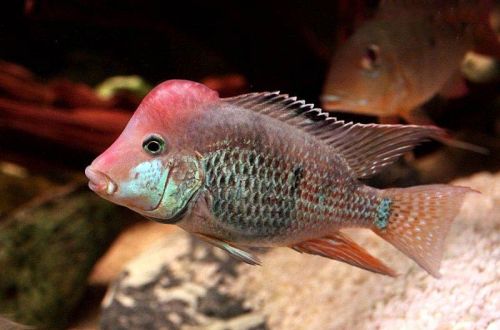
Bleher’s iris
Bleher’s iris, scientific name Chilatherina bleheri, belongs to the Melanotaeniidae family. The first specimens were collected in 1982 by the famous naturalist Heiko Bleher and assigned to the Rainbow fasciata (Chilatherina fasciata). Later in 1985, Gerald Allen established that it was a separate species, which he named after Heiko Bleher.

Contents
Habitat
It comes from the Indonesian part of the island of New Guinea – the province of Papua. Occurs in the Holmes Lake basin region of the largest local Mamberamo river in West Papua. Lake Holmes is a complex of three interconnected lakes. The fish inhabits a heavily indented coastline, including tributaries. A typical biotope is a calm body of water with rocky substrates and dense coastal vegetation.
Brief information:
- The volume of the aquarium – from 150 liters.
- Temperature – 22-33°C
- Value pH — 6.8–8.0
- Water hardness – 8–15 dGH
- Substrate type – any
- Lighting – subdued
- Brackish water – no
- Water movement – light or moderate
- The size of the fish is about 10 cm.
- Food – any food
- Temperament – peaceful
- Keeping in a group of 6-8 individuals
Description
It is a closely related species in relation to the Rainbow fasciata (Chilatherina fasciata), which is manifested in the external similarity of the two species. The fish have a high body, the back is strongly raised in the form of an arch. In the body pattern there are vertical dark stripes on the abdomen. Coloring combines yellow, blue and red colors. The back is yellow. Males are more brightly colored.
Outwardly, Bleher’s Rainbow differs in a slightly smaller size (about 10 cm) and the presence of red shades in the color in the posterior tail of the body.
Food
In nature, they feed on terrestrial and aquatic insects and their larvae, crustaceans, algae, and plants. The omnivorous nature of fish allows the use of dry, frozen and live foods popular in the aquarium hobby.
Maintenance and care, arrangement of the aquarium
The optimal environment for keeping the Blaer’s Rainbow is achieved in a spacious aquarium from 150-200 liters for 6-8 fish, the design of which combines hiding places and free areas for swimming. Branched snags, thickets of plants, including floating ones, will look most harmonious as shelters. The latter will prevent the fish from accidentally jumping out of the aquarium.
It is important to provide warm slightly alkaline water and prevent the accumulation of organic waste (feed leftovers, excrement). Aquarium maintenance is standard and consists of a number of mandatory procedures: weekly replacement of part of the water with fresh water, substrate cleaning, equipment maintenance, etc.
Behavior and Compatibility
They are highly active and can cause inconvenience to slower tankmates, but otherwise it is a peaceful accommodating species. Males compete with each other for the attention of females. It is recommended to purchase in a group where there will be more females than males.
Breeding / breeding
In favorable conditions, spawning occurs regularly. Since seasonality is not expressed in the artificial environment of aquariums, fry can appear throughout the year. Spawning takes place among thickets of plants or similar spawning substrate. Rainbowfish are not inclined to eat their offspring, however, it is desirable to move the juveniles into a separate tank. At first, feed with special food for aquarium fish fry (powders, suspensions).
Fish diseases
In a favorable environment, cases of the disease are rare. When the first symptoms of the disease appear (lethargy, deformation of the body, the appearance of spots, etc.), it is first necessary to check the quality of the water. Probably, bringing all indicators of the habitat back to normal will allow the body of the fish to cope with the disease on its own. Otherwise, medical treatment will be required. Read more in the section “Diseases of aquarium fish”.





